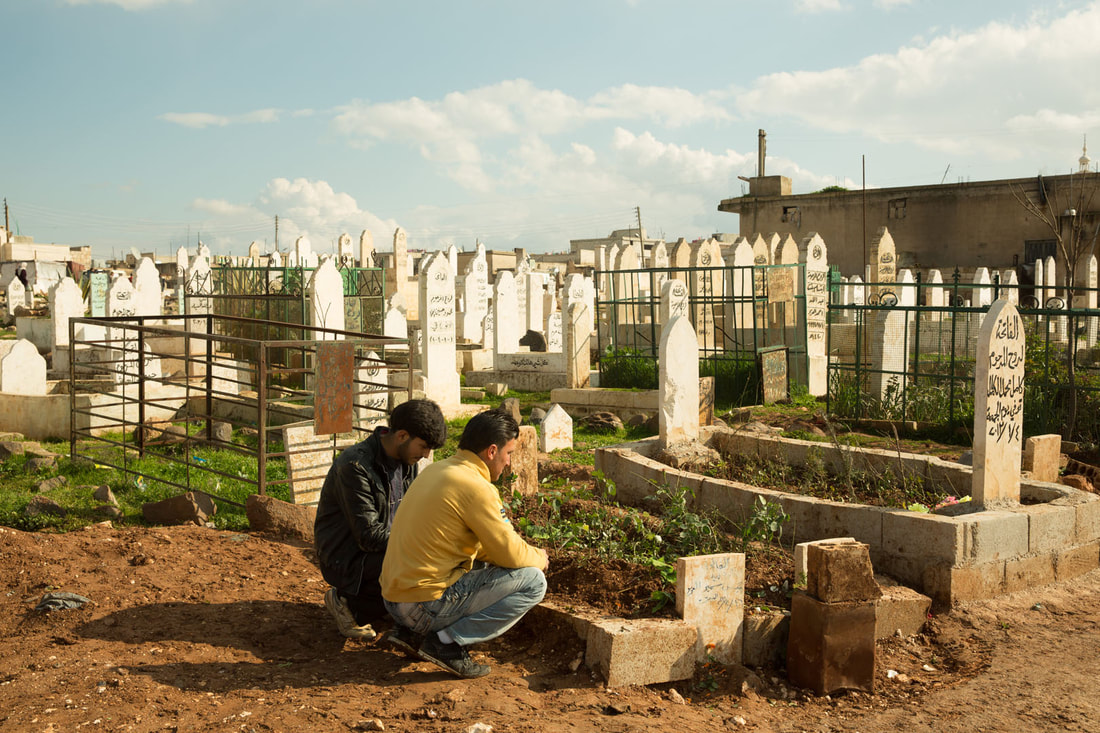|
|
About the PhotographerMatthias Bruggmann is a Swiss photographer, born in Aix-en-Provence in 1978. He is an alumni of the Vevey School of Photography. He has worked in Egypt, Haiti, Iraq, Somalia, Syria, and Libya, among other places. He was part of the curatorial team for We Are All Photographers Now! for the Musée de l’Elysée, and was one of the cofounders of the contemporary art space Standard/Deluxe in Lausanne. His work is part of a number of private collections, as well as public collections, including the Frac Midi-Pyrénées and the Musée de l’Elysée. |
|
My intuition, for the past few years, has been that as far as representation of the real is concerned, we've reached the end of photography, by no failure of its own, but because we've reached the end of an epoch. I never quite believed the myths, but the questions within the field, and within its paroxistical sub-genre of conflict photography, seemed interesting as far as the medium itself were concerned, and, equally importantly, there was a practical use, which helped give meaning.
This meaning is now gone, and the Syrian conflict helped precipitate it: millions looked us in the eye, and shouted “save us.” We whispered, “meh.”
This work is about Syria, and it is about photography. It is about them, and it is about us. It is about what you can do with photography, and when there is nothing you can do with photography.
This meaning is now gone, and the Syrian conflict helped precipitate it: millions looked us in the eye, and shouted “save us.” We whispered, “meh.”
This work is about Syria, and it is about photography. It is about them, and it is about us. It is about what you can do with photography, and when there is nothing you can do with photography.

Children watch as an air-strike hits Shinshirah, one of the Dead Cities, a UNESCO World Heritage site in Northern Syria where several hundred families had resettled. A number of them lived underground, inside graves, in hope it would protect them from bombardment. Haas, Reef Idlib, May 1, 2014. © Matthias Bruggmann
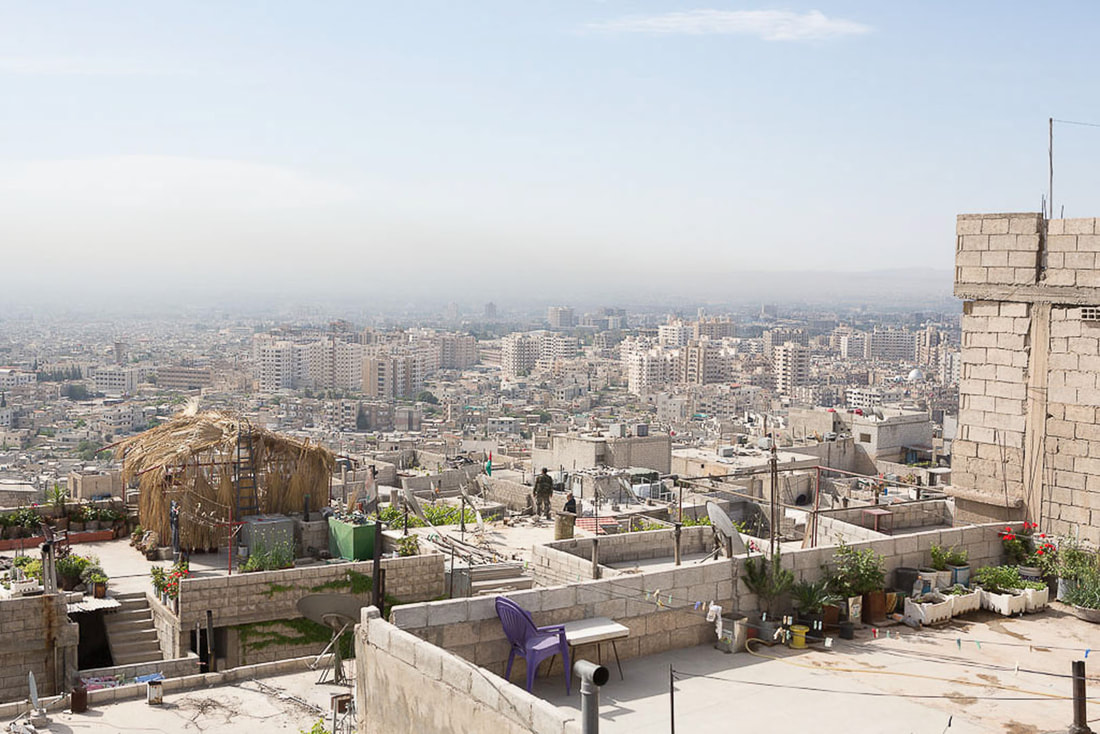
Residents of Ish Al-Warwar, a working class, majority Alawi, and pro-regime neighborhood of Damascus- with a significant number of Sunni residents – watch fighting in the working class, majority Sunni neighborhood of Barzeh that Ish al-Warwar overlooks. At the beginning of the demonstrations, when Barzeh was attacked by security forces or during mass gatherings for funerals, Ish al-Warwar residents would go down the hill to demonstrate in support of Bashar al-Assad. Many employees of the security services live in Ish al-Warwar and their children went to school with those of Barzeh, which, beyond sectarian issues, caused the strife to become personal. Socio-economically, Ish al-Warwar and Barzeh had everything in common but, because so many of the latter’s men worked in the security forces and other residents also worked as civil servants, the two neighborhoods quickly clashed. Ish al-Warwar, Damascus, May 5, 2012. © Matthias Bruggmann
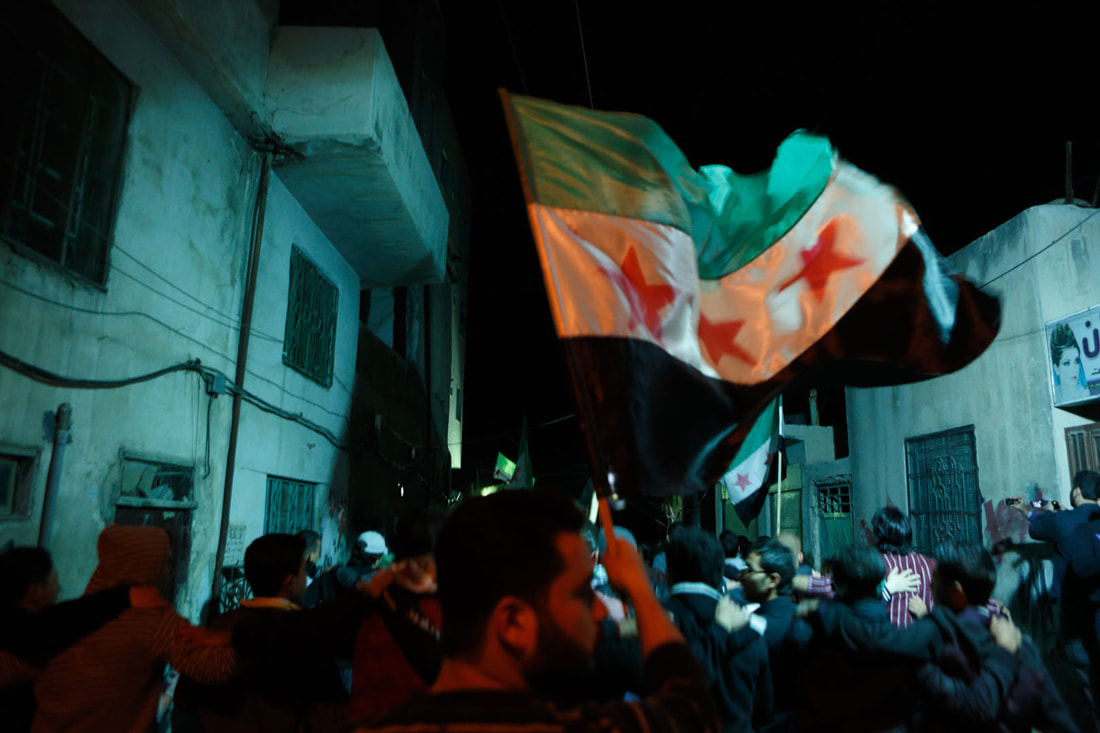
Opposition demonstration in the majority Sunni Damascus neighborhood of Barzeh. The demonstration consisted of people chanting against the government and was entirely peaceful. Barzeh was subsequently seized by the opposition in 2012, suffered significant damages, and, in December 2013, after months of government airstrikes and besiegement, it became the first neighborhood in Damascus to reach a “reconciliation” with the government whereby the opposition maintained military control of the neighborhood in exchange for security cooperation with the government, an easing of the siege, and the departure of local insurgents who opposed such a deal. Barzeh, Damascus, April 10, 2012. © Matthias Bruggmann

An antiquities looter searches for artifacts in an olive grove. Communities in rural Idlib are mostly agricultural. With the war came almost complete economic collapse. Fields became battlefields and the price of energy rose exponentially, which, coupled with drought, made watering the crops economically unviable. Some communities found another way to live off their land, through the antiquities trade. Reef Idlib, May 7, 2014. © Matthias Bruggmann
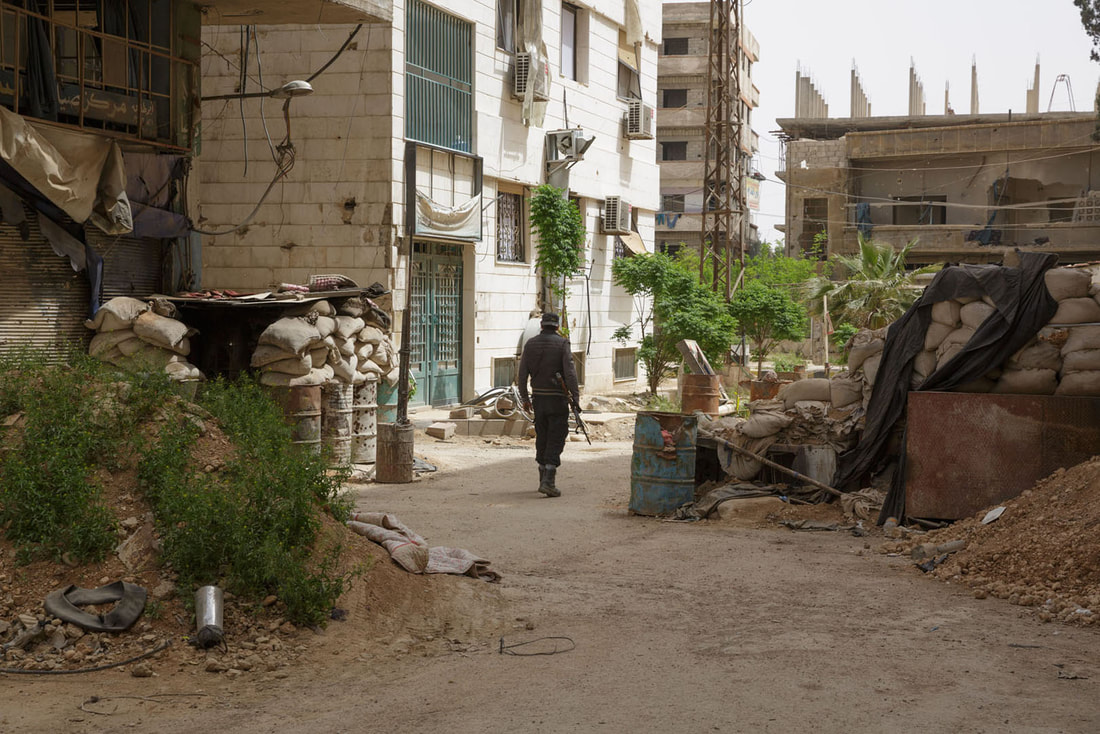
A Free Syrian Army (FSA) fighter who was fighting the Islamic State, which had occupied neighboring Hajar al-Aswad. Part of a string of neighborhoods in southern Damascus seized by insurgents in 2012 and 2013, Babila reached a reconciliation agreement similar to Barzeh’s in early 2014, and its former insurgents collaborated with government forces against Jabhat al-Nusra and ISIS. In effect, after several years of fighting against the government, the men of Babila ended up protecting the government. They expressed rather moderate enthusiasm at the situation, and stressed that they had made a truce, not peace. Babila, Damascus, May 23, 2015. © Matthias Bruggmann

The swimming pool at Al-Khair Hotel, above Marmarita. A number of the young men are from the Christian militia that protects Marmarita and helps besiege both the Krak des Chervaliers and al Husn, the Sunni village built around it. The Krak fell to the Syrian army in March 2014. Reuters, quoting Lebanese medical sources, reported that over forty of the opposition fighters fleeing the area were wounded in an ambush on the way out, with eight dead. Marmarita, Reef Homs, September 11, 2013. © Matthias Bruggmann
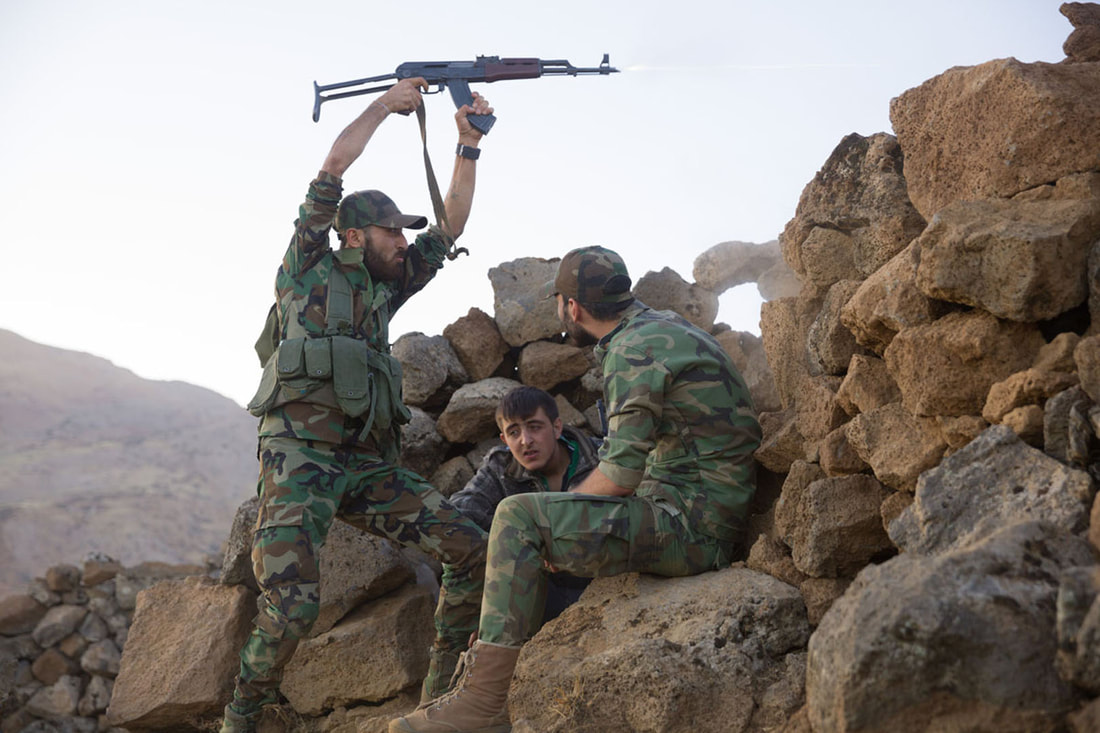
At the frontline with Beit Jinn, a Druze defector from the Directorate of the Military Intelligence trains a new recruit on how to fight. The fighter explained that he had been stationed at Palmyra and refused to return to his unit after the government’s defeat against the Islamic State there. He said he had informed his superiors that he would, from now on, stay in his town and defend it instead. Hadar, Reef Quneitra, August 7, 2015.
© Matthias Bruggmann
© Matthias Bruggmann
|
|
|

